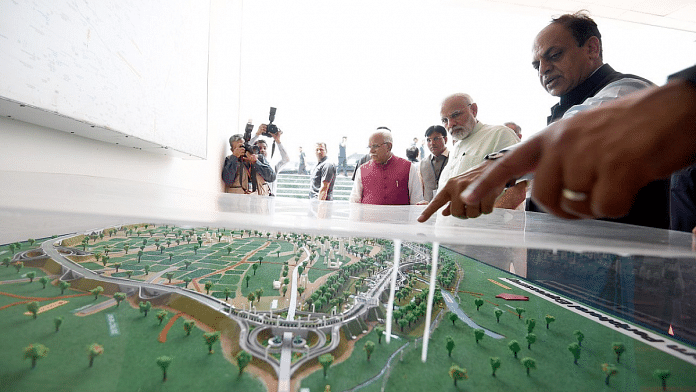The tragic incident that took the life of former Tata Group chairman Cyrus Mistry has been a major talking point in the Zoroastrian community for a few reasons. Cyrus was returning from a visit to the Iranshah Atash Behram at Udvada, a place of pilgrimage for Parsis where the community first landed in India after escaping from Persia or modern-day Iran. Ironically, the temple, dedicated to the Zoroastrian god Ahura Mazda, had been renovated by the Mistry family.
Several issues have been discussed in relation to the accident, especially as Parsis, for the large part, are really into cars. But noted auto historian Adil Jal Darukhanawala pointed out something important to me — that stretch of the road of the Mumbai-Ahmedabad highway, where the accident occurred, was a nightmare and an accident hotspot. And ever since Darukhanawala told me this, media reports have been mentioning just how dangerous that road is. A report in The Times of India highlighted that over 60 lives have been lost on that stretch in 2022 alone in 262 accidents and 192 people have been seriously injured.
Why roads matter too
Far too often in India, the driver is quick to be blamed for accidents; police blame rash driving or insobriety. If that is not the case, the car is made the culprit. In this case, the conversation revolved around airbags and why they could not save Cyrus Mistry. Maybe if Cyrus had been wearing his seatbelt, he might have survived like the driver and front passenger did. We can never know for sure. But one thing is certain — poor road designs have a huge role to play in accidents in India. It might have taken the loss of a prominent individual to start this discussion, something social media users have already raised concerns about, but unfortunately, that is the way media works. Now, solutions must be devised.
If you do not believe that road design can be deadly, let me give some examples from my personal experiences in Delhi. Once you come off the Delhi-Noida Direct (DND) Flyway and have to climb onto the Barapullah elevated road, you have to take a near 45-degree left turn while also dodging the traffic on Ring Road. Since this patch is near the Sarai Kale Khan Inter-State Bus Terminal (ISBT), you are dodging heavy bus traffic. Another example is when you’re coming off the Moolchand Flyover and trying to take the ramp towards Nehru Place where intersecting traffic and a bus stop make for a dangerous traffic point. And these are just two examples in Delhi, which is expected to have the best roads in India. In the rest of the country, there are thousands of such dangerous settings.
But these are just examples of poor traffic design. There are more serious concerns about road design — from the type of surfaces used, which, in some cases, can lead to a loss of traction and braking power to unnoticeable things like the design of the central verge. Many verges have a six-inch raise, which is so small that if you hit it with enough speed, you will go flying into the oncoming traffic. This is exactly what happened in a 2018 incident in Delhi’s Punjabi Bagh. Sure, the driver was drunk, but that ignored the fact that it was the verge that sent her car flying into oncoming traffic in the opposite lane.
Also read: Cyrus Mistry tragedy shows road safety is not limited to seatbelts
Little attention to barriers
Indian roads need proper barriers instead of structures that can potentially cause serious accidents. That brings us to deadly highways. According to Bharat Anand, co-owner at Safety First, a firm that specialises in highway safety barriers, the median, where Cyrus’s Mercedes-Benz had the accident, should have been protected by a safety barrier that would have taken a bulk of the impact. But it gets worse. “Until 2020, highways in India did not require barriers that were designed to international specifications. Even today, the specifications chosen in India for barriers are based on a 1993 United States design that the US themselves stopped using in 2000 when it was proven that it does not work. And on top of that, this design is only going to stop a two-ton vehicle, not heavy trucks,” he said.
In addition to the poor design, barrier testing is currently insufficient in India, according to Anand. “Barriers are currently being tested by NATRAX in Indore, which has great facilities for cars and even car crash testing but does not have the requisite technology to test barriers as of now.”
With India building roads at a fantastic pace, particularly expressways capable of supporting higher speeds, the lack of concern shown towards barriers is worrying. That is not to say that all the new highways are poorly designed and built. But some clearly are — and this is not even getting into the fact that many ‘access-controlled’ expressways have poor monitoring of such controls. Commuters on the Eastern Peripheral Expressway and the Western Peripheral Expressway in Delhi can testify: Tractors merrily come on the wrong side, which brings us to the point that most commuters in India are, for lack of a better word, idiots. But that is another story altogether.
@kushanmitra is an automotive journalist based in New Delhi. Views are personal.
(Edited by Humra Laeeq)






